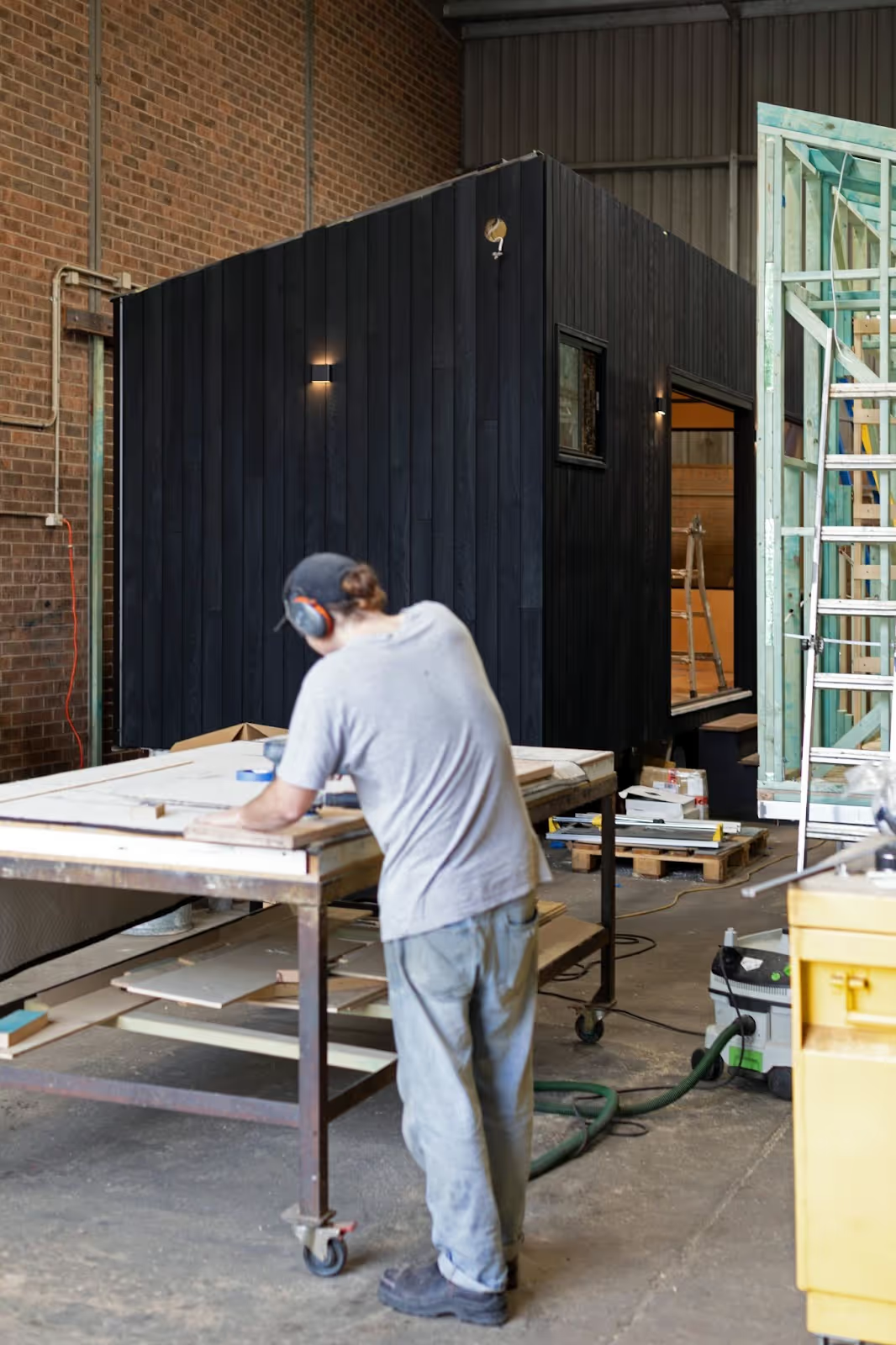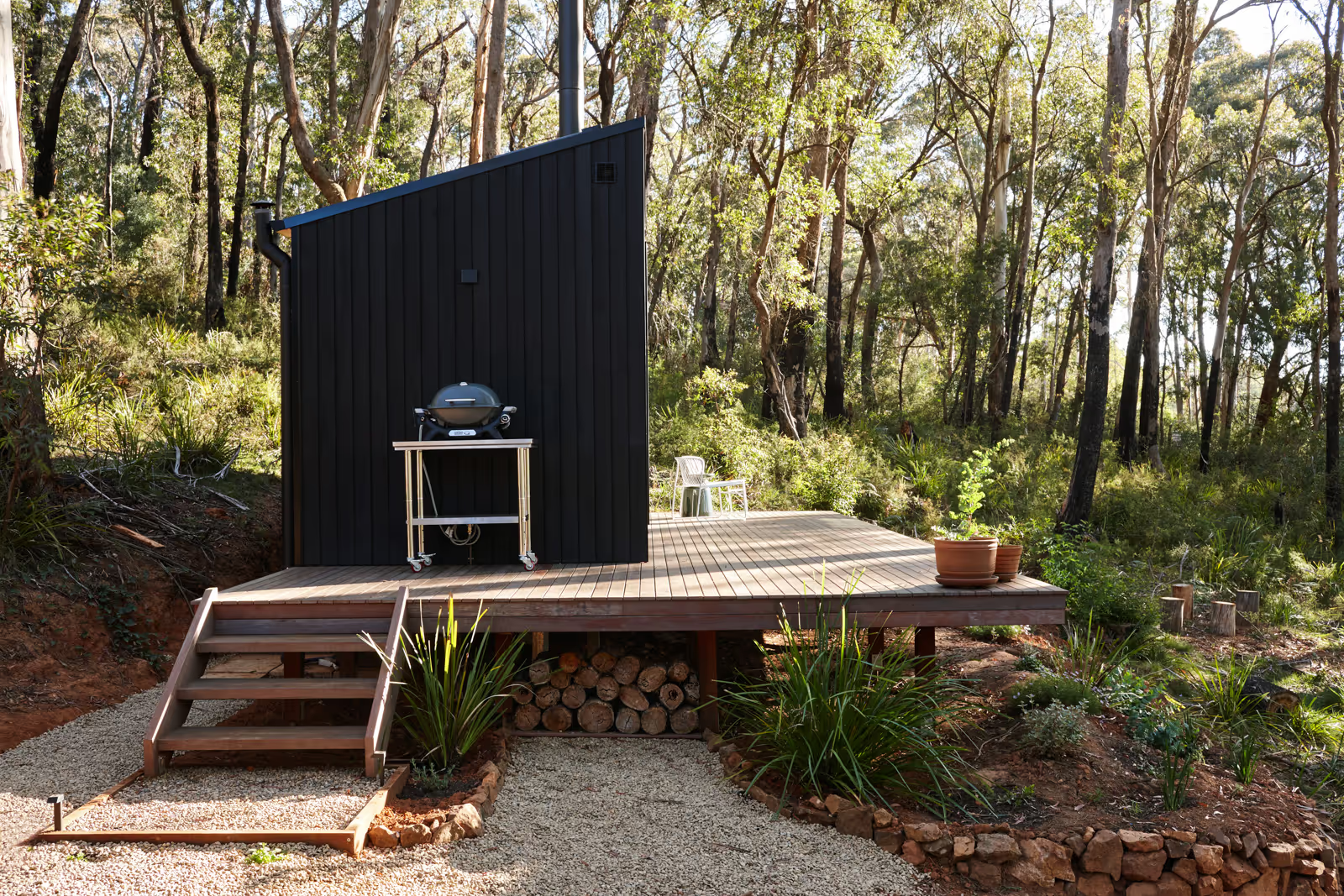Tiny House Cost Guide: Quality vs Budget Construction

Understanding the True Cost of Tiny House Construction
When considering a tiny house, the initial price tag tells only part of the story. A comprehensive assessment must account for long-term performance, structural integrity, materials quality, and maintenance requirements. At Tall Tiny, we build homes with proper construction techniques and quality materials that may have a higher upfront cost but deliver exceptional value over the lifetime of the home.
This guide examines the genuine costs of tiny house ownership, revealing why investing in quality construction pays dividends in both financial terms and quality of life.
The Difference Is in the Details: Quality vs Budget Construction
In the tiny house market, the phrase "you get what you pay for" holds particularly true. The difference between quality and budget construction often lies in elements you can't immediately see:
Structural Integrity
Quality Construction (Tall Tiny Standard)
- Engineered to withstand road transport stresses and vibration
- Properly calculated load paths ensuring structural stability
- Connections designed to maintain integrity during movement
- Appropriate bracing preventing racking and structural failure
Budget Construction
- Inadequate engineering for mobile applications
- Improper load calculations leading to structural weakness
- Connections that loosen over time with movement
- Insufficient bracing resulting in progressive structural issues
Construction Methods Comparison
Timber Frame (Tall Tiny method)
- Build Quality Factors: Proper thermal breaks, engineered connections, moisture management details
- Long-Term Performance: Maintains structural integrity, prevents thermal issues, ages gracefully
- Environmental Integrity: Renewable resource, carbon sequestration, biodegradable at end of life
Steel Frame (common budget option)
- Build Quality Factors: Thermal bridging issues, condensation risks, vibration transfer
- Long-Term Performance: Potential for rust at thermal bridges, moisture accumulation, loosening connections
- Environmental Integrity: Energy-intensive production, good recyclability, high embodied energy
Structural Insulated Panels (SIPs)
- Build Quality Factors: Service access difficulties, connection vulnerabilities, potential structural inadequacies
- Long-Term Performance: Challenging to repair, potential for hidden moisture issues, questionable mobile performance
- Environmental Integrity: Difficult to separate materials at end of life, chemical-intensive production

The Hidden Costs of Cutting Corners
Many budget-oriented tiny houses appear attractive initially but carry significant hidden costs due to budget construction:
- Structural Failures: Inadequate engineering leads to progressive issues:
- Wall separation during transport or in high winds
- Floor sagging under normal load conditions
- Roof leaks developing at improperly flashed joints
- Door and window operation problems as structure settles
- Maintenance Requirements: Budget materials and construction techniques lead to:
- Frequent repairs starting within 1-2 years of construction
- Progressive deterioration requiring component replacement
- Water damage remediation from inadequate weatherproofing
- Structural reinforcement needs as original design proves inadequate
- Performance Problems: Poor construction creates daily living challenges:
- Uncomfortable temperature variations from inadequate insulation
- Condensation and mold issues from thermal bridging
- Drafts and air leakage from improper sealing
- Excessive noise transmission through inadequate acoustic barriers
- Safety Concerns: Budget construction can lead to:
- Electrical systems that don't meet code requirements
- Gas installations with improper ventilation
- Fire risks from inadequate materials or clearances
- Structural stability issues during transport or severe weather
Tall Tiny Construction: Building It Right
At Tall Tiny, we believe in building homes to last a lifetime. Our construction approach focuses on proper techniques, quality materials, and careful execution:
Proper Construction Methods
- Engineered Design: Every home is properly engineered for structural integrity
- Thermal Break Design: Construction details prevent heat/cold transfer
- Moisture Management: Comprehensive approach to preventing condensation and water issues
- Structural Redundancy: Design accommodates movement without compromise
- Serviceable Systems: Accessible plumbing and electrical for maintenance and upgrades
Quality Materials That Last
- Structural Timber: Properly graded, kiln-dried timber for dimensional stability
- Premium Insulation: High-performance insulation installed without gaps or compression
- Proper Weatherproofing: Multiple layers of defense against water intrusion
- Durable Fasteners: Corrosion-resistant fasteners appropriate for each application
- Properly Rated Components: Fixtures and materials designed for long-term performance
Craftsmanship That Matters
- Skilled Artisans: Experienced carpenters and tradespeople executing the work
- Proper Sequencing: Construction steps performed in the correct order
- Quality Assurance: Multiple inspection points throughout the building process
- Attention to Detail: Careful execution of critical junctions and connections
- Pride in Work: Team members who care about the quality of what they build

The True Cost Comparison: Quality vs Budget Construction
When evaluating the real cost of a tiny house, we must consider:
- Initial Investment: The upfront cost
- Maintenance Costs: What you'll spend keeping it in good condition
- Repair Expenses: Addressing issues that arise over time
- Operational Costs: Energy and other ongoing expenses
- Longevity: How long the structure remains serviceable
- Residual Value: What the home is worth years later
Building for a Lifetime: The Value of Doing It Right
At Tall Tiny, we believe in building homes that last generations. This philosophy isn't about luxury—it's about responsibility:
Environmental Responsibility
- Resource Efficiency: Quality construction minimizes waste through precise material use
- Energy Performance: Proper construction dramatically reduces lifetime energy consumption
- Longevity: Homes that last decades require fewer resources than those rebuilt every 10-15 years
- End-of-Life Considerations: Quality materials can often be reused or responsibly recycled
Financial Responsibility
- Lifecycle Costing: Lower total ownership cost despite higher initial investment
- Predictable Expenses: Fewer surprise repair costs and emergency expenditures
- Value Retention: Quality construction maintains value significantly better
- Investment Protection: Your tiny home remains an asset rather than becoming a liability
Personal Responsibility
- Safety: Properly built homes protect their occupants
- Health: Quality construction creates healthier indoor environments
- Peace of Mind: Knowing your home is built to withstand time and use
- Legacy: Creating something of lasting value rather than temporary convenience
Making an Informed Decision
When considering a tiny house purchase, look beyond the price tag to evaluate:
- Construction Methods: How is the home built and what engineering supports it?
- Material Quality: What specifically is being used and why?
- Builder Expertise: What experience does the builder have with proper construction?
- Transparency: Is the builder willing to show you exactly how they build?
- Quality Assurance: What inspection and quality control processes are in place?
- Track Record: How have their homes performed over time?
Conclusion: The Value of Building It Right
A tiny house represents not just a place to live, but a significant investment. While cutting corners may seem attractive initially, the true cost analysis reveals that quality construction offers superior value over time.
At Tall Tiny, our approach delivers:
- Properly built homes that perform as expected
- Significantly lower lifetime costs
- Better day-to-day living experience
- Reduced environmental impact
- Peace of mind from knowing your home will stand the test of time
We believe that quality isn't an upgrade—it's the only responsible way to build. The elements you don't see—proper framing, correct insulation installation, appropriate flashing details, and engineered connections—determine how your tiny house performs over time, how it feels to live in day after day, and ultimately, what it costs you in both financial and quality-of-life terms.
Book a Consultation to discuss your specific needs and how our commitment to quality construction can deliver exceptional value for your investment.




